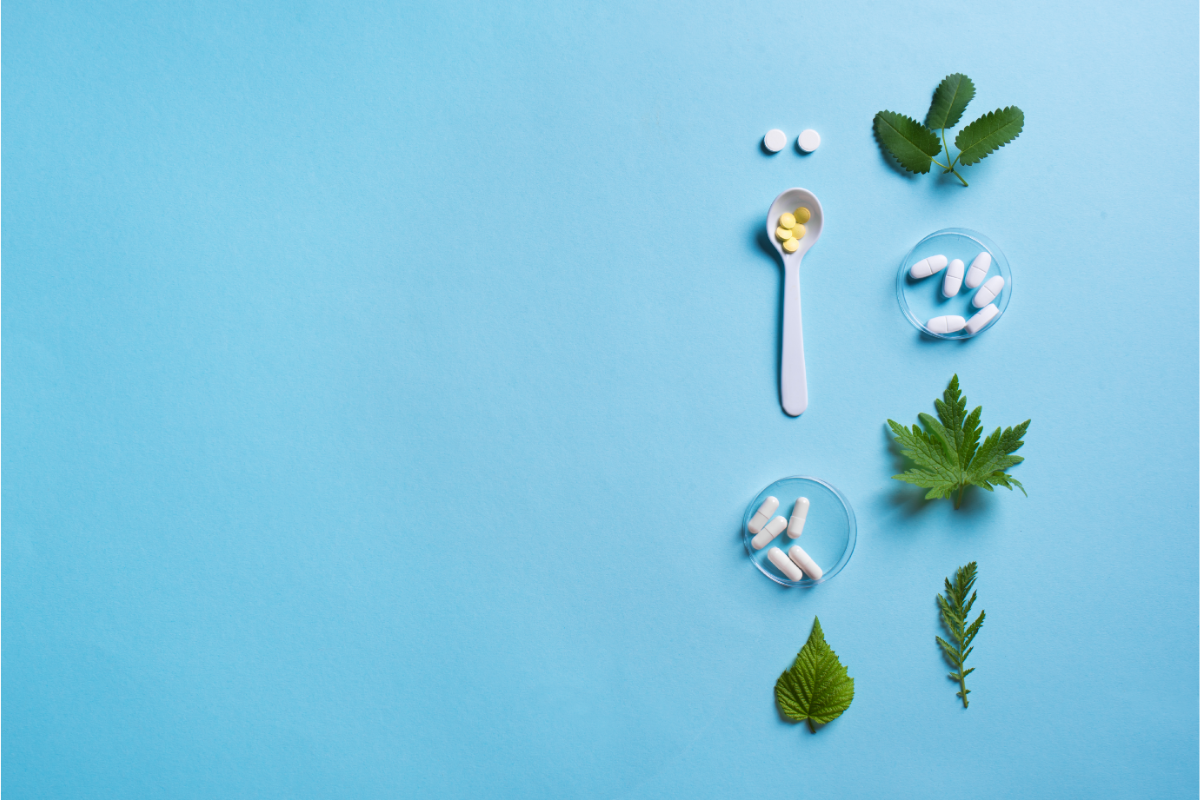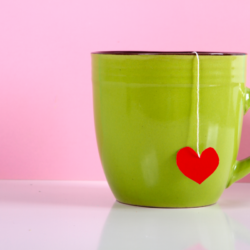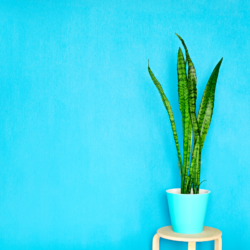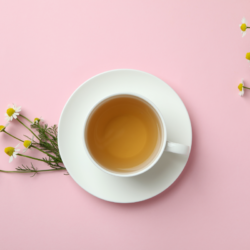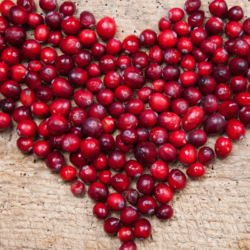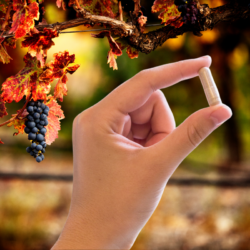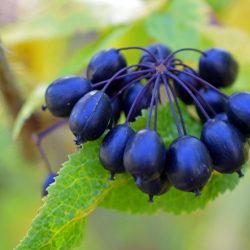The cold and the microbes of winter put your immune system to the test. Colds, sore throats, nasopharyngitis, flu… there are many ailments that the body has to contend with. To boost your immune defences, your pharmacy can advise you on the best use of natural medicines. Phytotherapy (health through plants) has specific applications that can improve your day-to-day health, in particular by boosting your immune system. In this article, you’ll discover the different ways of boosting your immune system using natural remedies such as echinacea, ginseng, black elderberry, spirulina, sea buckthorn and grapefruit seed extract.
Echinacea for its immune-stimulating action
Echinacea is a plant native to North America used for its supposed immunostimulant action in the prevention and treatment of colds, flu and respiratory infections.
It is the first plant recommended by phytotherapists for preventing infections and recurrences. Native to North America, the Comanches and Sioux used it to heal infected wounds and snake bites. Later, in the 19th century, it was imported to Europe and cultivated on the continent. Since bacteria have become resistant to antibiotics, it has been the subject of much renewed interest.
What are the botanical attributes of this plant?
Purple Echinacea, also known as purple rudbeckia (Echinacea purpurea), is a flowering plant in the Asteraceae family. It is endemic to North America. It is distinguished by its generally purple flower head. Linnaeus first described it as Rudbeckia purpurea in 1753. Moench reclassified it as Echinacea purpurea (L.) Moench in 1794.
The taxonomic complexity of this species is marked by various revisions. Thomas Nuttall identified a variety, Rudbeckia purpurea var. serotina in 1818. De Candolle reclassified the latter as a distinct species, Echinacea serotina, in 1836. Errors in classification were rectified in 2002, with a proposal to retain existing names to avoid confusion.
The origin of the vernacular terms used by herbalists and horticulturists can be traced back to the Latin nomenclature Rudbeckia purpurea. In 1968, McGregor made a significant contribution to understanding the genus Echinacea. He recognised 9 species. More recently, in 2002, Binns et al. grouped these taxa into 4 species and 6 varieties.
This perennial plant can grow to 120 cm in cultivation, with erect, rough stems terminating in a solitary flower head. Its alternate, oval to lanceolate leaves form a rosette at the base. The inflorescence is a radiate flower head composed of orange-yellow tubular florets and purple-red to pink ligulate peripheral flowers. Flowering takes place from July to September.
Purple Echinacea is pollinated by butterflies, bumblebees and bees. Its natural habitat extends from the south-eastern states to the Midwest of the United States, including dry woodlands, meadows and farmland.
How does it work?
Purple coneflower (Echinacea purpurea) has immunostimulant properties, including specific immunomodulation and non-specific stimulation of the immune system. It boosts the body’s defences against infectious agents thanks to its lipophilic ethanol (alkylamides) and hydrophilic polysaccharide fractions. Phenolic derivatives, such as cichoric acid, play a key role in this action.
This plant has positive effects on stress-induced immunosuppression, increasing splenocyte proliferation and natural killer (NK) cell activity. It also modifies T lymphocyte subsets and cytokine levels.
Echinacea has anti-infectious properties, acting against various pathogens. It is antibacterial, inhibiting the growth of bacteria such as Streptococcus pyogenes and methicillin-resistant Staphylococcus aureus. Its antiviral activity extends to various membrane viruses, including coronaviruses. Cichoric acid and echinacoside contribute to this activity. It also has antifungal effects on Candida albicans and dermatophytes, as well as antiparasitic properties against Trichomonas.
Echinacea is also known for its dose-dependent anti-inflammatory properties. These effects are due to its polysaccharide fraction and alkylamides. It acts on vascular and tissue inflammatory processes, inhibiting various enzymes and cellular mechanisms. It modifies macrophage activation, notably reducing the expression of inducible nitric oxide synthase (iNOS) and increasing arginase activity.
In addition to respiratory infections, echinacea is also useful in other inflammatory conditions, such as recurrent minor aphthous ulcers and rheumatoid arthritis. Its complex mechanism of action, involving various cellular and molecular interactions, continues to be the subject of in-depth research.
How can it be used?
For prevention, echinacea is generally taken once a day, 5 days out of 7. For curative treatment, increase the dose by 3 to 4 times, spread over 24 hours, for 1 to several weeks. For dry food supplements, take 1 to 2 capsules per dose. Liquid doses vary:
- 5 to 10 ml of standardised fluid extract per day,
- 5 to 10 ml of integral suspension per day,
- 30 to 50 drops of hydroalcoholic fluid extract per dose,
- or infuse 1 g of roots per cup, 1 to several times a day.
It is most effective in the form of SIPF, for 6 to 8 weeks maximum, as over the long term it actually reduces immunity. Contraindicated in certain diseases (auto-immune diseases, HIV/AIDS, etc.) or in certain treatments (corticoids, chemotherapy, etc.).
What are the precautions for use?
Echinacea requires certain precautions and has some contraindications. Its use should be avoided in the case of auto-immune diseases and progressive systemic diseases. These include tuberculosis, leukemia, collagenosis, multiple sclerosis and AIDS. It should not be used by pregnant or breast-feeding women. Its use is also prohibited for children under 12 and people allergic to Asteraceae. Caution is advised for people with hepatic risks or those exposed to hepatotoxic substances.
According to Commission E and ESCOP, patients should not take echinacea for more than 8 weeks to avoid prolonged immune stimulation, which could theoretically exhaust it. Cases of leukopenia have emerged following prolonged use. Echinacea may accelerate the clearance of midazolam. Its combination with steroids or immunosuppressants is not recommended. It also influences CYP450 enzymes, notably by inhibiting the 3A4, 1A2, 2C19 and 2D9 isoforms. A case of erythema nodosum has occurred with the simultaneous use of loratadine and echinacea.
Ginseng stimulates immunity
Originally from Asia, ginseng has a general tonic effect on the body. It is reputed to stimulate the immune system, helping the body to defend itself against aggression and imbalances. Ginseng comes in the form of dried root powder (in capsules).
How do you define it botanically?
Ginseng (Panax ginseng) is a perennial plant belonging to the Panax genus of the Araliaceae family. There are around ten cultivated species worldwide, of which Panax ginseng C.A. Meyer from North-East Asia and Panax quinquefolius, the American ginseng, are the best known. Ginseng root, used for its pharmaceutical properties, is also eaten as a food. The name Panax, derived from the Greek word for “panacea”, indicates its traditional use as a universal remedy.
The most famous ginseng is grown mainly in Korea, where it is called “insam” or “goryo insam”, referring to its anthropomorphic appearance. The term “ginseng” comes from the Mandarin Chinese “rénshēn”, meaning “root of man”, adapted into English from the Japanese pronunciation of these characters.
To develop its full qualities, ginseng needs to be cultivated for at least six years. The price of ginseng varies according to the age of the root, and its cultivation requires a great deal of care, making it an expensive product. The Korean ginseng trade is strictly regulated, with a state seal guaranteeing the quality of the product.
In mainland France and Quebec, Ginseng can be grown in undergrowth. It prefers light, slightly acidic soil and needs protection from frost in winter. It takes four to seven years to grow.
Panax ginseng is distinguished by a stalk that is longer than the petiole, unlike American ginseng. It contains ginsenosides and triterpenoids, and influences NO synthesis in the blood vessels. Although it does not significantly affect blood pressure or diabetes, its ginsenosides have anti-inflammatory and antioxidant effects.
It is recognised in traditional Asian medicine for its tonic and aphrodisiac effects.
How does it work?
Ginseng, renowned for its immunomodulating properties, has a significant influence on the immune system. It increases the production of T and B lymphocytes, strengthening the body’s specific and non-specific immune response. The stimulation of NK (Natural Killer) cell activity by this substance plays a crucial role in the fight against infections and cancer cells. Combining Ginseng with a flu vaccine amplifies the vaccine response. This combination leads to a significant increase in antibodies. It boosts the activity of NK cells, offering better protection against respiratory infections.
In addition to its role as an immunomodulator, Ginseng is appreciated for its adaptogenic action, improving physical and mental capacities. It stimulates resilience in the face of stress and promotes recovery in convalescents. Its neuroprotective properties are also noteworthy, particularly in preventing memory disorders and modulating mood.
Hormonally, it regulates the pituitary-cortical-adrenal axis, reducing cortisol secretion following chronic stress and improving the cortisol/DHEA ratio, particularly during the menopause.
In terms of its anti-inflammatory action, Ginseng inhibits the production of inflammatory mediators by macrophages, thereby reducing inflammation. This property is beneficial in conditions such as atopic dermatitis and the protection of joint cartilage.
Ginseng also has anti-allergic and antioxidant effects, and stimulates NO synthase, contributing to its vasodilatory and cardioprotective properties. Its hepatoprotective and anti-diabetic action is also recognised, as are its beneficial effects on various other aspects of health, including gastrointestinal and vascular protection, and anti-cancer effects.
How should it be used?
Ginseng can be taken in various forms:
- In dry form: it is available as a medicine (in homeopathic dilution) or dietary supplement, in the form of standardised fresh plant extract, dry extract, powder, capsules or tablets, or in bulk, alone or combined with other plants.
- In liquid form: it is taken as a standardised fresh plant fluid extract (5 to 15 ml per day in a glass of water) or hydroalcoholic extract (bottle, ampoules) / mother tincture (25 to 50 drops 1 to 2 times / day in a glass of water).
It is recommended to take Ginseng in the morning and/or at midday, but not in the evening, regardless of the galenic form chosen.
Although Ginseng is beneficial to health, it should be used with caution and has certain contraindications. It can cause gynaecomastia in men.
As for drug interactions, Ginseng may interact with anticoagulants such as warfarin, monoamine oxidase inhibitors (MAOIs), triptans and, potentially, digitalis.
Elderberry syrup to stimulate children’s immune defences
Elderberry, a multi-faceted shrub once celebrated for its medicinal virtues, is making a comeback in the world of modern phytotherapy. The species in question are Sambucus nigra and Sambucus canadensis, renowned for their therapeutic properties. Historically, elderberry was considered to be “nature’s pharmacy”, used to treat a wide range of ailments. Today, thanks to more in-depth scientific studies, its health benefits are better understood and appreciated.
What are the botanical attributes of black elderberry?
The Black Elder (Sambucus nigra L.), which can reach heights of 2 to 6 metres, has woody, warty-grey twigs filled with white pith. Its leaves, which have no or very small stipules, consist of 5 to 7 toothed, oval-acuminate, petiolate leaflets. Its white flowers, which become slightly yellowish as they dry and are highly fragrant, are grouped in large, flat corymbs with five main branches and appear after the leaves.
The corollas of the Black Elder have rounded oval lobes and yellow anthers. Its berries, which are black or rarely whitish when ripe, adorn the shrub. Ecologically, Sambucus nigra is found in woods, hedgerows and near streams. It is widespread throughout Europe, the Caucasus and the Pontic region. It is growing in subspontaneous form in Algeria.
The flowers are used for their sudorific properties in infusions, while the bark and berries have purgative effects. Fast-growing, Black Elder finds its natural habitat in open woods, hedgerows and waste ground, thriving particularly in fertile, cool soils. Black Elder is widely distributed, frequently found around homes and often planted.
The fragrant, hermaphrodite flowers appear in early summer. The fruit are small, soft-fleshed, purplish-black berries in clusters containing three seeds. Black elderberry is easily propagated by sowing or cutting.
Certain species of moth feed exclusively on it. It is also home to the Judas ear fungus and the black elder aphid, which is specific to this plant.
The cooked flowers and berries of black elderberry are edible, but the other parts of the plant, as well as the unripe fruit, are poisonous. Black elderberry can be confused with Elderberry (Sambucus ebulus), which differs in flowering time, stamen colour and fruit orientation.
About Canadian Elder…
Canadian Elder or White Elder (Sambucus canadensis) is a deciduous shrub in the Caprifoliaceae family. Native to North America, it is extremely hardy, withstanding temperatures as low as -30°C. It grows to 2 to 3 metres in height and width and produces numerous suckers.
This shrub is distinguished by its small white flowers in flat inflorescences. It bears fruit: dark purple to black berries 3 to 5 mm in diameter, arranged in drooping clusters, which attract birds. Closely related to the European Sambucus nigra, some people classify this American species as a subspecies of Sambucus nigra.
The fruit of the Canadian Elderberry is used to make wine, jam, tinctures, syrup and medicinal products. The fruit is rich in anthocyanins, vitamins, calcium and iron. While the ripe berries are edible after cooking, all other parts of the plant, containing cyanogenetic glycosides and a cathartic substance, are toxic.
The plant has been the cause of poisoning in cattle and potentially sheep. Cases of poisoning in children using the hollow stems as whistles have been reported. Raw berries can cause nausea and contain calcium oxalate, which is potentially dangerous.
Canada Elder grows naturally near watercourses, favouring wet areas, but adapts to dry environments when cultivated. It is not generally self-fertile, requiring insect fertilisation to produce fruit. It is easy to propagate by taking cuttings.
What are its properties?
Black elderberry can be useful for relieving and even treating immune disorders. Elderberries(Sambucus nigra) can be used in children. It is not only immunostimulant, it is also antiviral.
In terms of antibacterials, elderflower extract inhibits the release of pro-inflammatory cytokines by macrophages, suppressing the activation of neutrophils involved in the destruction of periodontal tissue. This action is attributed to inhibition of nuclear factor kappa B (NF-kB) and phosphatidylinositol 3-kinase (PI3K). In addition, elderberry extract shows antibacterial activity against various strains, both Gram and Gram-.
In terms of antiviral properties, elderberry extract effectively inhibits the H1N1 influenza A virus, thanks to its flavonoids, which prevent the virus from entering the host cell. The berries neutralise viral haemagglutinins and stimulate the immune system by increasing the production of cytokines by monocytes.
Elderberry’s anti-inflammatory and immunostimulant properties are particularly notable in the respiratory system. Elderflowers increase bronchial secretions and the production of inflammatory cytokines, which may benefit patients suffering from influenza or who are immunocompromised. A diet enriched with elderberry extract reduces damage to the mucous membrane. It also reduces myeloperoxidase activity, thereby improving the integrity of the colonic mucosa.
The anthocyanins in elderberries have a strong antioxidant action, surpassing that of many other berries. They protect endothelial cells against oxidative stress, helping to prevent cardiovascular disease. Finally, elderberry extract has anti-diabetic effects by protecting haemoglobin from glycation.
How can it be used?
Elderberry can be taken in various forms, each with its own specific dosage:
- Dry form: As a dietary supplement, in the form of dry extract in capsules, 2 to 4 capsules a day with a large glass of water, or in the form of chewable gummies, 2 gummies a day.
- Liquid form: Honey glycerine fluid extract 5 to 15 ml per day in water or Mother macerate between 5 and 15 drops per day, depending on the person and the problem. Start with 5 drops and increase by one drop each day until a stable result is obtained.
Children love it in syrup or EPS form. Take these plants every 2 hours until the infection is gone. Taking them closely together is essential for maximum effectiveness.
- For adults, 1 teaspoon of Echinacea tincture every 2 hours in a little water, up to 5 times a day.
- For children, 1/2 teaspoon of elderberry syrup or EPS every 2 hours in a little water, up to 5 times a day.
What are the precautions for use?
As a natural remedy, Elderberry needs to be used with particular care:
The European Medicines Agency (EMA) recommends that pregnant or breast-feeding women and children under 12 should not use Elderberry.
Insulin-dependent diabetics should remain under medical supervision when taking Elderberry to monitor its impact on their blood sugar levels.
If you are self-medicating with Elderberry, symptoms such as dyspnoea, fever or purulent sputum should prompt you to consult a qualified health professional. These symptoms may indicate an adverse reaction requiring medical evaluation.
Excessive consumption of undercooked elderberries can cause gastrointestinal upset. These include heartburn, nausea and vomiting.
Consider the potential pharmacological interaction between Elderberry and a mixture of Echinacea purpurea. This interaction may inhibit the CYP3A4 enzyme, which is involved in the metabolism of certain drugs. It is therefore recommended that you inform a healthcare professional of any concomitant use of these substances, especially if you are taking medication.
Spirulina boosts the immune system
Spirulina is suitable for everyone. Recommended for people who are physically and mentally active, for sportspeople, during pregnancy and breastfeeding, as part of a slimming programme, for vegetarians, for children and the elderly: spirulina is suitable for everyone. The benefits of spirulina are many and varied. In particular, spirulina is used in tablet form to reduce stress and boost the immune system. Spirulina is recommended during a fast or a detoxification diet to boost the immune system and improve general well-being. Because it is rich in antioxidants, organic spirulina capsules are effective in combating disorders linked to cell oxidation.
What is spirulina?
Spirulina, often mistaken for a blue-green microalga, is in fact a cyanobacterium of the “true prokaryote” type. Its name comes from the Latin word “spira”, referring to its spiral structure, visible in favourable conditions. It belongs to the Arthrospira genus, including the species Spirulina (Arthrospira) maxima and Spirulina (Arthrospira) platensis, which are widely used in food.
This cyanobacterium grows naturally in alkaline lakes in warm regions, requiring temperatures of between 35 and 40°C, nutrient-rich water and strong exposure to the sun, which limits the presence of other micro-organisms. Spirulina reproduces rapidly by asexual division and can float thanks to gas vacuoles. At high temperatures, it enters a resting state.
Spirulina photosynthesises, feeds on minerals and can transform atmospheric nitrogen. It grows on the surface of tropical lakes and is used mainly for its nutritional qualities and colouring properties. Its classification now includes several closely related species under the Arthrospira genus.
Spirulina contains a large amount of protein, representing 60 to 70% of its dry mass, as well as essential fatty acids, trace elements, particularly iron, minerals and vitamins, including B12, which is highly prized by vegetarians. Studies have demonstrated its high nutritional value and antioxidant properties. Phycocyanin, the pigment that gives it its blue-green colour, has a number of virtues, including antioxidant, anti-inflammatory, immunostimulant and detoxifying effects.
As a complete food, spirulina deserves a place in our daily diet for its richness in proteins, vitamins, minerals, antioxidants, chlorophyll and phycocyanin.
What are its properties?
Spirulina has numerous health benefits, particularly for the immune system. It strengthens the immune system by stimulating the production of white blood cells and promoting the production of antibodies, making it a valuable ally in preventing infection and supporting the body in the event of illness.
Various factors such as chronic stress can upset the balance of the immune system, increasing vulnerability to infection. Spirulina has been studied for its positive impact on immunity, particularly in fish such as trout, where it has been shown to boost resistance to certain infections. In humans, around 70% of immunity resides in the intestine, and spirulina appears to play a role in regulating intestinal inflammation, helping to maintain a strong immune system.
Spirulina can also help to eliminate heavy metals from the body. Chronic exposure to these metals can impair immunity. However, it is essential to choose spirulina from regulated and tested cultures to avoid any accumulation of toxins.
As well as its impact on the immune system, spirulina also offers other health benefits. It is a natural source of energy thanks to its protein, vitamin and mineral content, making it an ally against fatigue.
In addition, spirulina promotes cardiovascular health by reducing bad cholesterol, increasing good cholesterol, lowering blood pressure and improving blood circulation.
It can also help with weight loss by acting as a natural appetite suppressant, controlling appetite and reducing cravings. With regard to diabetes, studies suggest that spirulina can complement drug treatments by improving glycaemia, lipid profile and insulin sensitivity in diabetic patients.
How can it be used?
Spirulina is available in the form of flakes, powder, tablets and capsules. Flakes are the least processed form, preserving spirulina in its raw state after drying. Powder is obtained by grinding the flakes, but it does not dissolve well in water. Tablets and capsules are also common, but their quality can vary depending on the manufacturing process.
It’s important to note that spirulina should be used as part of a healthy lifestyle, including a balanced diet and exercise. The recommended amount depends on individual needs, but generally ranges from 3 to 5 grams a day, without exceeding 10 grams. It can be taken in courses lasting several months.
What are the precautions for use?
Although spirulina is generally well tolerated, there are some contraindications and precautions to be taken. People allergic to seaweed or seafood, as well as those suffering from auto-immune diseases or coagulation disorders, or taking anticoagulants, particularly anti-vitamin K (AVK) drugs, should avoid spirulina. Its vitamin K content and anti-platelet potential may interact with anticoagulants. Patients on VKAs should therefore consult a doctor before consuming spirulina. Similarly, people on immunosuppressive drugs are advised to avoid spirulina, as its immunostimulant properties could reduce the effectiveness of these drugs, although this interaction has not yet been confirmed by studies.
Although rare, adverse reactions to spirulina can include nausea and allergic reactions. Spirulina is not recommended for pregnant or breast-feeding women, or for people suffering from gout, kidney stones or high uric acid levels.
The French National Agency for Food, Environmental and Occupational Health and Safety (ANSES) warns that spirulina has a high beta-carotene content, which may exceed daily intake limits. If grown in polluted environments, spirulina may contain heavy metals and toxins. It is therefore crucial to check the origin and quality of the product. At doses of 3 to 5 grams a day, spirulina seems safe, but we recommend choosing a product grown under rigorously controlled conditions to avoid the risks associated with heavy metals.
Finally, spirulina can stimulate the immune system, making it unsuitable for people with autoimmune diseases. What’s more, its phenylalanine can pose a problem for people suffering from phenylketonuria.
Grapefruit seed extract to support the immune system
In liquid form,grapefruit extract is a natural antibiotic that boosts the body’s resistance. In particular, EPP contains vitamin C, which boosts the immune system and acts as a real anti-fatigue agent, and vitamin E, which protects against premature ageing. For the last fifteen years or so, grapefruit seed extract (GSE) has been the best natural antibiotic. And we’re right to regard it as such.
How do you recognise a grapefruit?
Grapefruit, also known as grapefruit or forbidden fruit in some regions, is a fruit tree in the Rutaceae family. It is a natural hybrid between Citrus maxima and the orange tree Citrus sinensis, with several cultivars presenting different characteristics. The fruit of the grapefruit is a widely marketed citrus fruit, either whole or in juice form.
Although some may confuse it with the grapefruit tree because of its large size and slightly bitter notes, the grapefruit is distinguished by its thinner skin and fewer seeds. To reduce the acidity of the fruit, it needs plenty of sunshine. Florida is the world’s leading producer of pomelos.
Botanists commonly refer to the fruit of Citrus × paradisi as the “grapefruit”, both in Europe and North America. However, the terms “grapefruit” and “grapefruit” are often used as vernacular or commercial names, especially in the expression “grapefruit juice”. Some sources treat these terms as synonymous with ‘pomelo’, while others see them as a misuse of language and anglicisms.
The grapefruit fruit measures between 8 and 15 cm in diameter and weighs between 300 and 600 grams. It has a thin, yellow or pink skin and very juicy flesh. Depending on the variety, the flesh may be yellow and bitter or pink, sweeter and less bitter. The bitterness of the grapefruit comes from naringoside, a flavonic compound.
Nutritionally, raw grapefruit is mainly water, with small amounts of protein, fat and fibre. It also contains vitamins, notably vitamin C, and minerals such as potassium.
How does it work?
Since the work of Dr Jacob Harich popularised it in the 80s and 90s, nothing better has been found. As you can read in the book Secrets et Merveilles du Pamplemousse (Ed. Médicis), one of the many books that have been written on the subject since the early 90s, grapefruit seed oil has an equivalent or superior effect to the most powerful antibiotics and antimycotics. Proven by international research teams in comparative tests.
Grapefruit Seed Extract (GSE) is a curative, preventive and care product. It is effective in treating bacterial and viral infections and respiratory tract problems without destroying the intestinal flora, thereby minimising side effects. It also helps to combat mouth ulcers when diluted in warm water and used as a gargle.
As a preventive product, EPP has antifungal properties that can prevent severe gastric ulcers. It also acts as an antioxidant, protecting the body’s cells against free radicals. By strengthening the immune system, it helps to reduce chronic fatigue.
EPP (Grapefruit Seed Extract) can be used as a skin care product. Combined with toothpaste, it helps to eliminate cellulite and acne, leaving the skin smoother and firmer. Mixed with a regular shampoo, it is effective in resolving dandruff problems and caring for the scalp.
It’s important to note that EPP is marketed as a natural antibiotic. Although further studies are needed to fully confirm its properties, in vitro studies have already demonstrated its effectiveness against certain bacteria. In addition, certain components of EPP, such as lycopene, are recognised for their protective effects against prostate cancer and other health benefits.
How can I use this natural antibiotic to boost my immune system?
Grapefruit seed extract is available in liquid or capsule form. It can be taken orally or applied topically to the skin. Dosage depends on use, so follow the manufacturer’s instructions or consult a healthcare professional before starting supplementation.
Here are some examples of external applications:
- For fever blisters: mix 6 drops of grapefruit seed extract in a spoonful of vegetable oil. Apply this mixture several times a day.
- For tartar: place 2 drops of extract directly on a damp toothbrush, repeating 3 times a day.
- For acne: rub 5 drops into the palms of your hands and apply to a damp face, avoiding the eye area.
- For bad breath: gargle with 5 to 10 drops mixed in a glass of water.
- For warts: apply pure extract directly to the wart, twice a day.
- For nail fungus: file the nail as short as possible and apply a few undiluted drops twice a day.
Grapefruit seed extract isn’t just for humans. It is also used to soothe animals on livestock farms suffering from infections or fungus, offering a natural alternative to antibiotics.
In organic farming and gardening, this extract is used to combat mould, mildew, slugs and aphids, and to treat animals suffering from fungal infections.
What precautions should be taken?
When choosing grapefruit seed extract, it’s essential to pay particular attention to the labels to guarantee its quality. We recommend that you choose the liquid form of the extract. It is considered purer and more effective than tablets. It is important to check that the compound obtained is as natural as possible, avoiding cheap products.
It is also important to note that grapefruit seed extract can interact with certain medications. This interaction can disrupt the absorption of medicines and reduce their effectiveness, or even cause serious side effects.
It is also important to note that Citrus × paradisi, the grapefruit itself, can cause drug interactions. Citrus × paradisi acts as an inhibitor of cytochrome 3A4, an enzyme responsible for the metabolism of many drugs. As a result, blood levels of drugs that are substrates of the 3A4 isoenzyme can rise to potentially dangerous levels, depending on the drug in question.
Various drugs may be affected, such as :
- statins for cholesterol,
- benzodiazepines (anxiolytics and sleeping pills),
- immunosuppressants (for transplant rejection and certain immune diseases),
- calcium channel blockers (for high blood pressure and heart problems),
- indinavir (for HIV),
- carbamazepine (for epilepsy and bipolar disorder),
- as well as certain anticoagulants and antibiotics.
These interactions can cause serious side effects, such as :
- rhabdomyolysis (muscle destruction),
- acute renal failure
- incapacitating tremors, and even haemorrhagic shock, which can be fatal.
Although grapefruit seed extracts are generally considered safe, it is essential to take these potential risks into account.
Sea Buckthorn helps boost the immune system
Sea Buckthorn fruit is exceptionally rich in vitamin C, with a concentration 5 times that of kiwi fruit and 30 times that of oranges! Vitamin C stimulates the immune system, while vitamin E reduces the risk of infection. We recommend using Sea Buckthorn syrup and juice to boost your immune system for people who are tired, overworked or convalescing, schoolchildren, sportsmen and women and smokers – but also in autumn, to fortify your body and prepare you for the cold season.
What are its botanical attributes?
Sea Buckthorn (Hippophae rhamnoides L.) is a dioecious, thorny shrub native to the temperate zones of Europe and Asia. It is found in many countries, including high altitude subtropical regions. It belongs to the Eleagnaceae family. It has several synonyms, including Elaeagnus rhamnoides (L.) A. Nelson, Hippophae angustifolia Lodd, H. littoralis Salisb, H. rhamnoideum Saint-Lager, H. sibirica Lodd, H. stourdziana Szabó, Osyris rhamnoides Scop, Rhamnoides hippophae Moench.
The name “hippophaes” comes from references to a spiny spurge in the works of Pliny and Dioscorides, due to the presence of spines. In Greek, Theophrastus mentions “ἰππόφεως – hippopheôs” and “φέως – pheôs”, designating the thorny burnet, leading to “ἰππόφεως – hippopheôs” meaning the “great thorny burnet”. The qualifier “rhamnoides” evokes “false buckthorn” (Rhamnus).
Sea Buckthorn has various vernacular names linked to its morphology or environment. Its phonetic similarity to the arbutus (Arbutus unedo) often leads to confusion.
This shrub has an arborescent form, is woody and thorny, generally reaching a height of 1 to 5 metres, but can reach 18 metres in certain conditions. It is deciduous in appearance and can live up to 80 years. Sea Buckthorn is dioecious, with distinct male and female individuals, pollinated by insects and dispersed by birds. It prefers light and is considered a pioneer plant.
Sea Buckthorn leaves are deciduous, narrow and single-veined. The greenish, apetal flowers appear in April, before the leaves. The fruits, called argouses, are edible, ovoid, yellow or orange when ripe, measuring 6 to 8 mm in diameter.
It is found in Europe, Asia, North America and North Africa, covering vast areas, particularly in Russia and China.
What are its properties?
Sea Buckthorn (Hippophae rhamnoides L.) has been used for food, medicinal, horticultural and ecological purposes for over 1,200 years. It is grown in Russia, China, France and other regions.
In France, particularly in the Hautes Alpes and Alpes du Sud regions, local producers make sea buckthorn into jams, pastes, syrups and juices.
In ancient Greece, it was used as a remedy for horses, helping them to gain weight quickly and their coats to shine. Today, in north-west China and Russia, it is used as animal fodder, improving the pigmentation of egg yolks in poultry and the flesh of rainbow trout.
In horticulture and forestry, Sea Buckthorn stabilises eroded soil thanks to its root nodules, which fix atmospheric nitrogen. It is used as a defensive hedge and windbreak, and improves resistance to salt. Its berries benefit birdlife, and the plant spreads easily, making it a valuable pioneer species.
And in phytotherapy?
Herbal medicine recommends Sea Buckthorn juice because of its high content of ACE vitamins, particularly vitamin C. However, confirming these benefits requires additional references. Sea Buckthorn from the Southern Alps stands out for its exceptional concentration of vitamin C. They even surpass citrus fruits such as oranges and kiwis.
Sea buckthorn oils, although rare, contain an abundance of vitamin E, vitamin A and omega 3, 6, 7 and 9 fatty acids. They play an important role in healing and moisturising the skin and mucous membranes. Sea Buckthorn butter, derived from these oils, is also available.
It is used in a variety of medical applications, such as vermifuge, tonic, astringent, antiseptic, and treatment of burns and skin wounds. The cosmetics industry also uses Sea Buckthorn oil in the production of skin care products.
In traditional Asian medicine, Sea Buckthorn treats various internal and external disorders: digestion, heart, breathing, skin and mucous membranes. Preliminary research on Sea Buckthorn consists mainly of in vitro and animal tests. Its benefits are attributed to its antioxidants and fatty acids.
Sea Buckthorn is also considered a general tonic and adaptogen, boosting the body’s resistance to stress.
In addition, clinical trials have suggested that Sea Buckthorn may have beneficial effects on cardiovascular protection, high blood pressure, modulation of cholesterol levels, and other conditions. Preliminary research also indicates its protective potential against the toxic effects of radiation, mustard gas and arsenic, as well as its usefulness in the treatment of Gougerot-Sjögren’s syndrome and cirrhosis of the liver.
How can Sea Buckthorn be used to boost the immune system?
Sea Buckthorn syrup is made from the juice of the berries, extracted in such a way as to collect the active substances. Rich in natural vitamin C and beta-carotene, it helps the body fight the effects of free radicals. It is an excellent tonic that helps the body to regain its vitality and strengthen its natural defences.
To use Sea Buckthorn juice, drink a 70 ml glass diluted in water every day. For optimum results, follow this course of treatment for three to six months.
Scientific and clinical data do not allow precise dosages to be determined for the use of Sea Buckthorn, which comes in various forms such as juice, capsules, extracts, honey, jelly, etc. It is important to follow the instructions supplied with the product carefully. The instructions supplied with the various preparations available on the market should be followed carefully.
Sea Buckthorn berry oil is mainly used for daily massages. To use this oil effectively, we recommend applying it once or twice a day, particularly to wounds or very dry areas of skin.
As regards precautions for use, it should be noted that Sea Buckthorn is exceptionally rich in vitamin C, with a concentration five times greater than that of kiwi fruit and thirty times greater than that of oranges. As a result, it is best avoided at the end of the day to avoid disturbing sleep.
There are no known contraindications to the use of Sea Buckthorn, and there have been no reports of adverse reactions linked to its use. In addition, no interactions between Sea Buckthorn and other medicinal plants or food supplements have been identified, and there are no reports of interactions with medicines.

